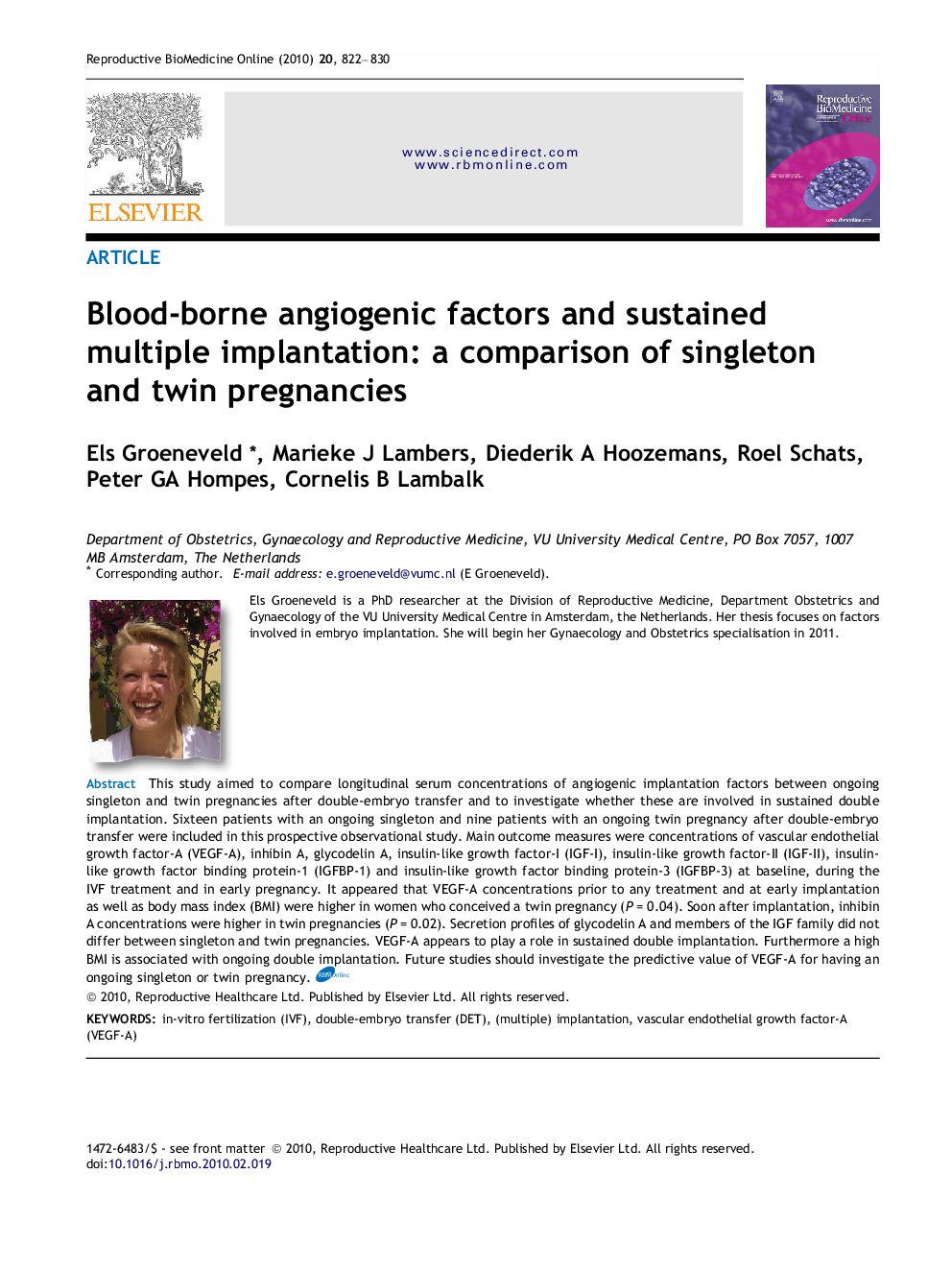| کد مقاله | کد نشریه | سال انتشار | مقاله انگلیسی | نسخه تمام متن |
|---|---|---|---|---|
| 3970853 | 1256741 | 2010 | 9 صفحه PDF | دانلود رایگان |

This study aimed to compare longitudinal serum concentrations of angiogenic implantation factors between ongoing singleton and twin pregnancies after double-embryo transfer and to investigate whether these are involved in sustained double implantation. Sixteen patients with an ongoing singleton and nine patients with an ongoing twin pregnancy after double-embryo transfer were included in this prospective observational study. Main outcome measures were concentrations of vascular endothelial growth factor-A (VEGF-A), inhibin A, glycodelin A, insulin-like growth factor-I (IGF-I), insulin-like growth factor-II (IGF-II), insulin-like growth factor binding protein-1 (IGFBP-1) and insulin-like growth factor binding protein-3 (IGFBP-3) at baseline, during the IVF treatment and in early pregnancy. It appeared that VEGF-A concentrations prior to any treatment and at early implantation as well as body mass index (BMI) were higher in women who conceived a twin pregnancy (P = 0.04). Soon after implantation, inhibin A concentrations were higher in twin pregnancies (P = 0.02). Secretion profiles of glycodelin A and members of the IGF family did not differ between singleton and twin pregnancies. VEGF-A appears to play a role in sustained double implantation. Furthermore a high BMI is associated with ongoing double implantation. Future studies should investigate the predictive value of VEGF-A for having an ongoing singleton or twin pregnancy.
Journal: Reproductive BioMedicine Online - Volume 20, Issue 6, June 2010, Pages 822–830